{Bath, England}
It feels like so many cemeteries that I visit have the same backstory: In the early 19th century, the cemeteries in town were filling up, and so a new cemetery was built on the outskirts of town - for health reasons, and to expand burial space.
Bath Abbey Cemetery is no different. Burials had taken place at Bath Abbey for centuries - prominent citizens and parishioners were buried beneath the floor of the Abbey, and underneath the stones of the courtyard, as well. (So many people, in fact, that the floor of Bath Abbey has recently undergone an extensive restoration and repair after the floor was left unstable due to the gaps left by decomposing bodies.)
But by the early 1800s, the cemeteries of Bath were getting full, and so a new cemetery was planned on the hill just outside of town, just below the beautiful National Trust property Prior Park. If you are making the long, slow climb from the center of Bath to the Prior Park entrance, it is a perfect place to stop and break your walk. Which is exactly what I did one late summer afternoon.
I hadn’t planned to visit the cemetery, I just sort of stumbled on it. But I’m so glad I did.
The cemetery was built to ease the strain on burial at Bath Abbey…and now, 175 years after it was opened, Bath Abbey Cemetery itself is full. Closed to new burials. The deceased can still be added to existing plots, but years - sometimes several at a time - go by without any burials taking place. Visitors are few and far between.
Built on a steeply sloping hill overlooking the city, the cemetery is quiet and mostly inactive…and the nature that was tamed into elegance in the 19th century is coming back with a vengeance.
The lines between the natural world and the man-made are growing increasingly blurry. What looks like a tree or shrub or bush out of the corner of your eye will turn out to be a monument or headstone upon closer inspection. Ivy is everywhere. Wildflowers in a riot of colors, creeper, shrubs, weeds…it sounds like chaos, but it is, in fact, lovely. Paths are mown and kept tidy so that the vast majority of the cemetery is easily accessible, at least during the spring. The cemetery’s website says that spring is the best time to visit if you’d like to see a particular headstone. By September, when I’m here, most individual gravestones are impossible to access.
These days, the cemetery is owned by the Bath city council, and not by the church. Individual families are responsible for the upkeep of headstones, but sometimes the city intervenes, in the name of preservation. It is not inexpensive: the restoration of a single monument can cost thousands of pounds.
Like many of England’s quiet or disused cemeteries, Bath Abbey Cemetery these days acts as a nature reserve - a sanctuary for birds, insects and other fauna (and flora, too).
It is also a magical place to walk around. I would walk here every day if I could.
Many of us, I’m sure, are familiar with the Japanese concept of wabi-sabi, the philosophy that teaches us to embrace imperfection and to have respect for the life cycle of all living things - growth and decline, blossom and decay.
Some may visit an overgrown cemetery and see neglect.
But I think they are missing out. The truth is that Bath Abbey Cemetery is strikingly beautiful. Picturesque and serene, it is all the better for its quiet unruliness. Standing amidst the tangle, looking over the lovely city for which it was named, it’s hard not to think that the souls that will spend eternity here are very lucky indeed.






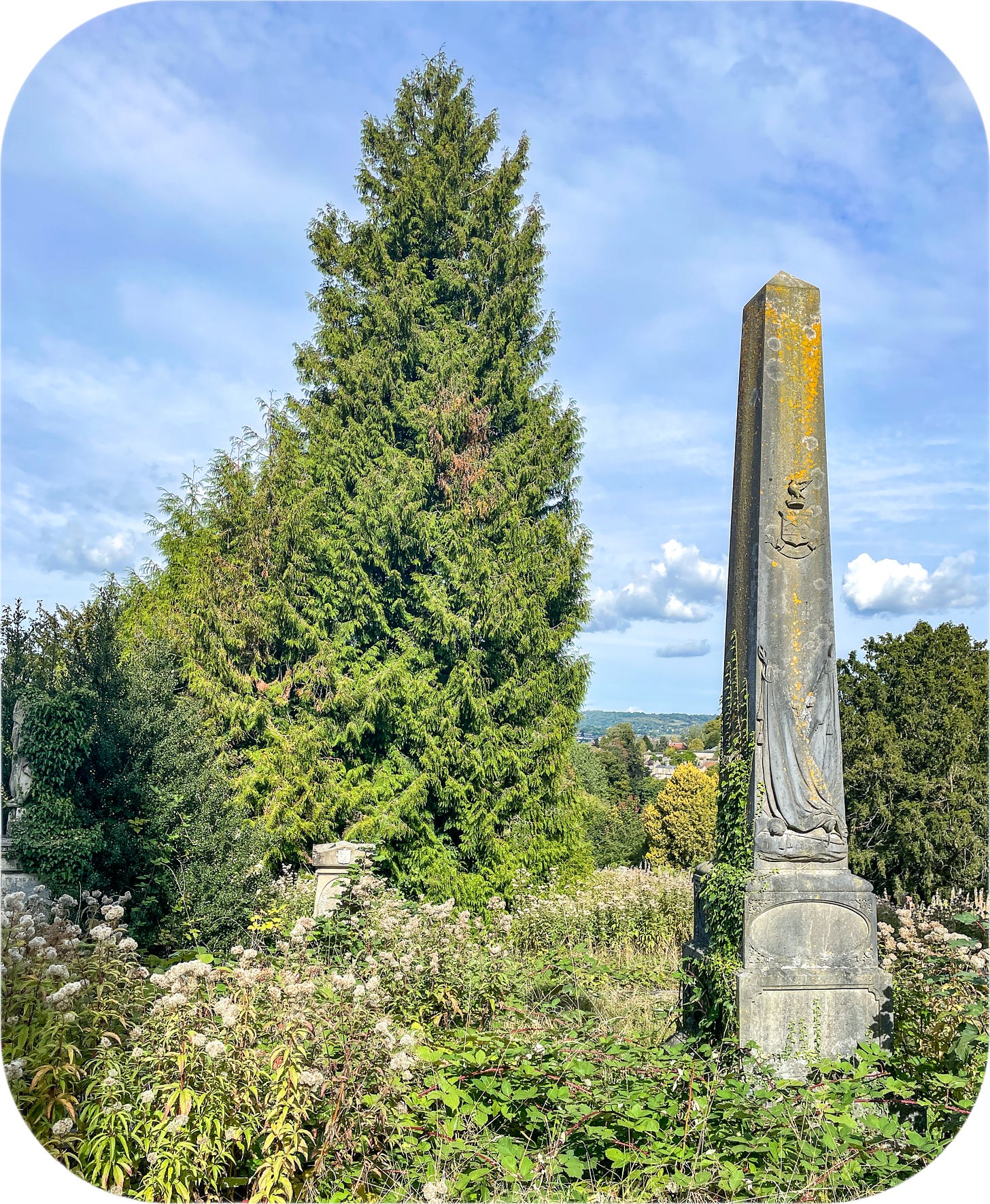
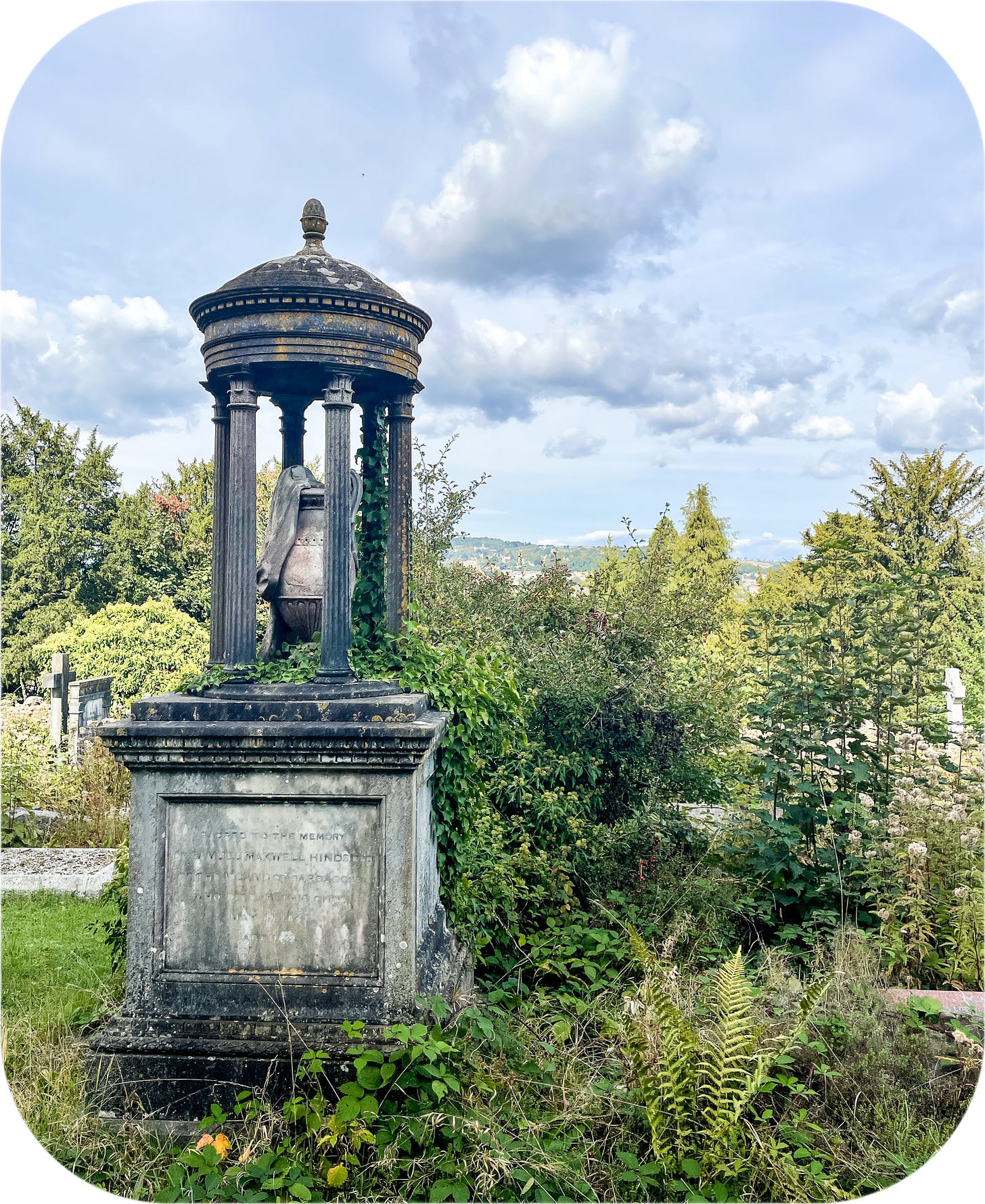
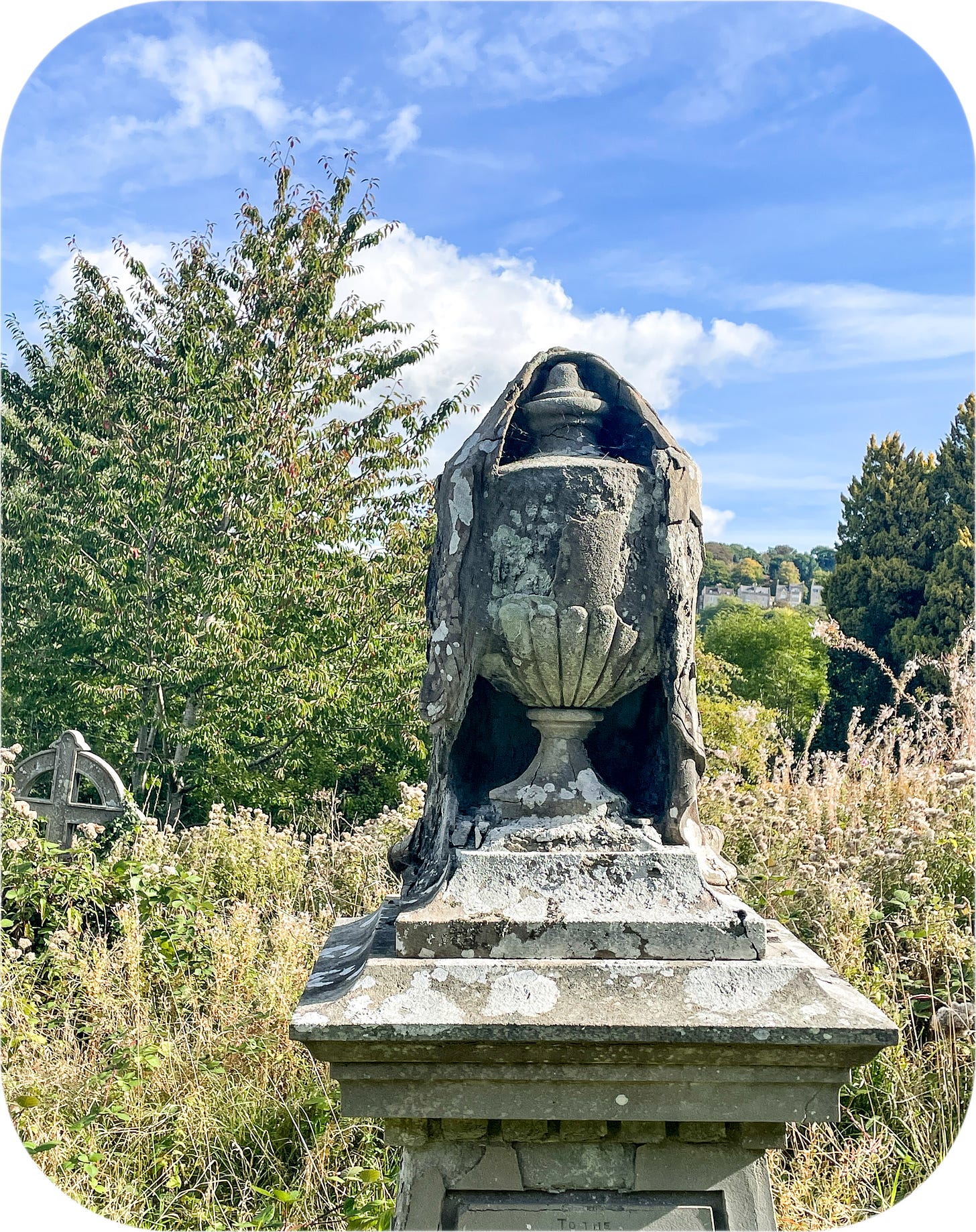
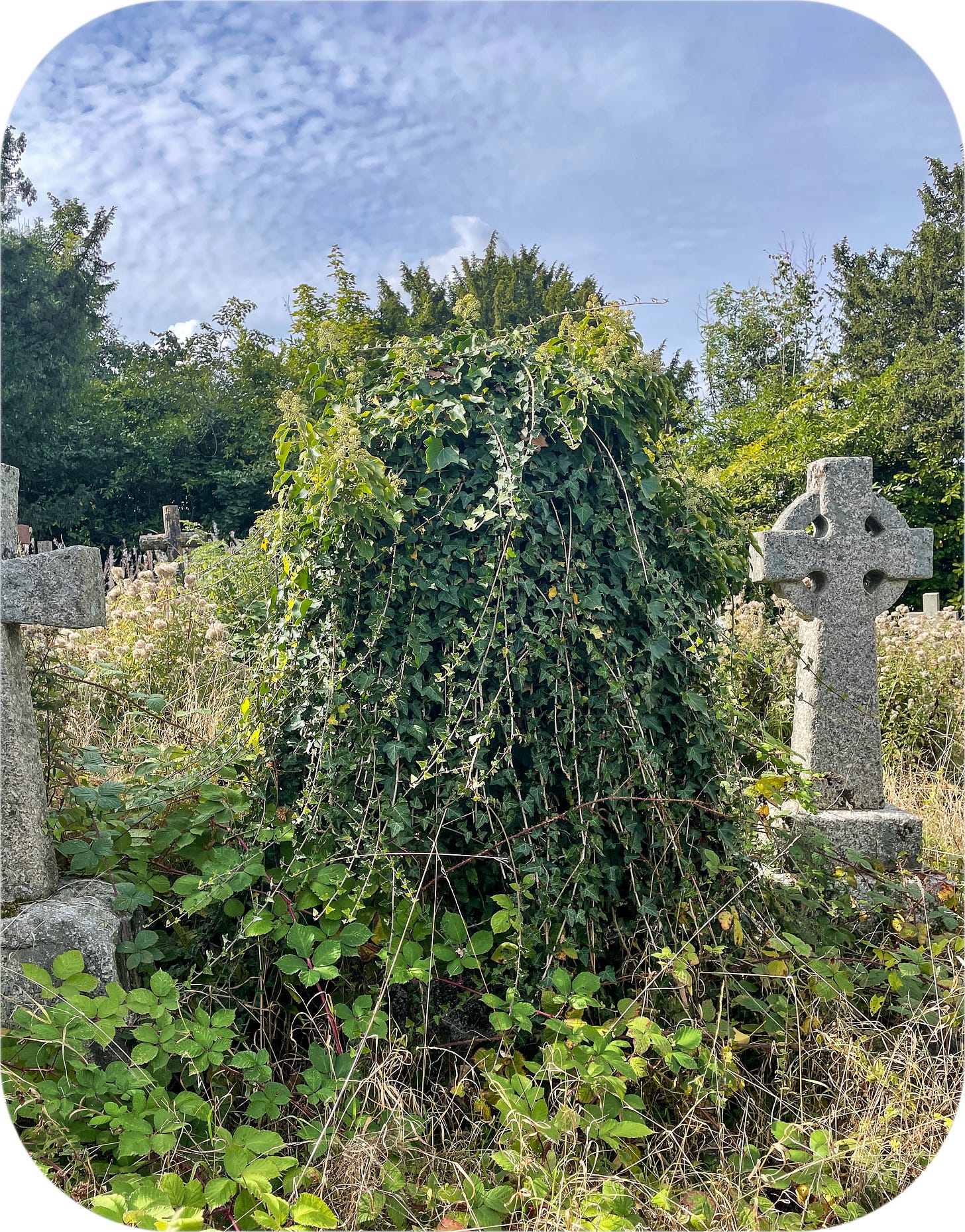
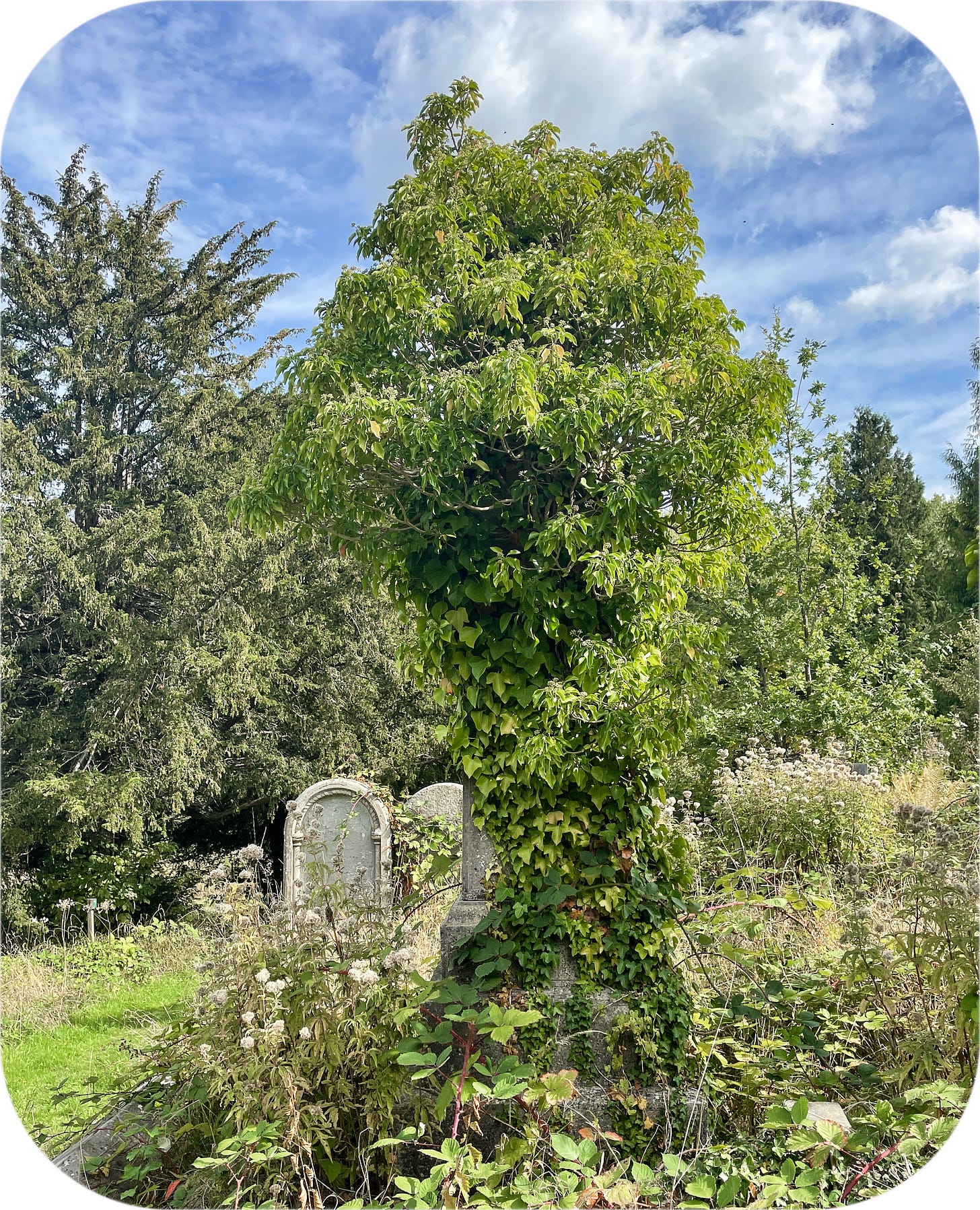

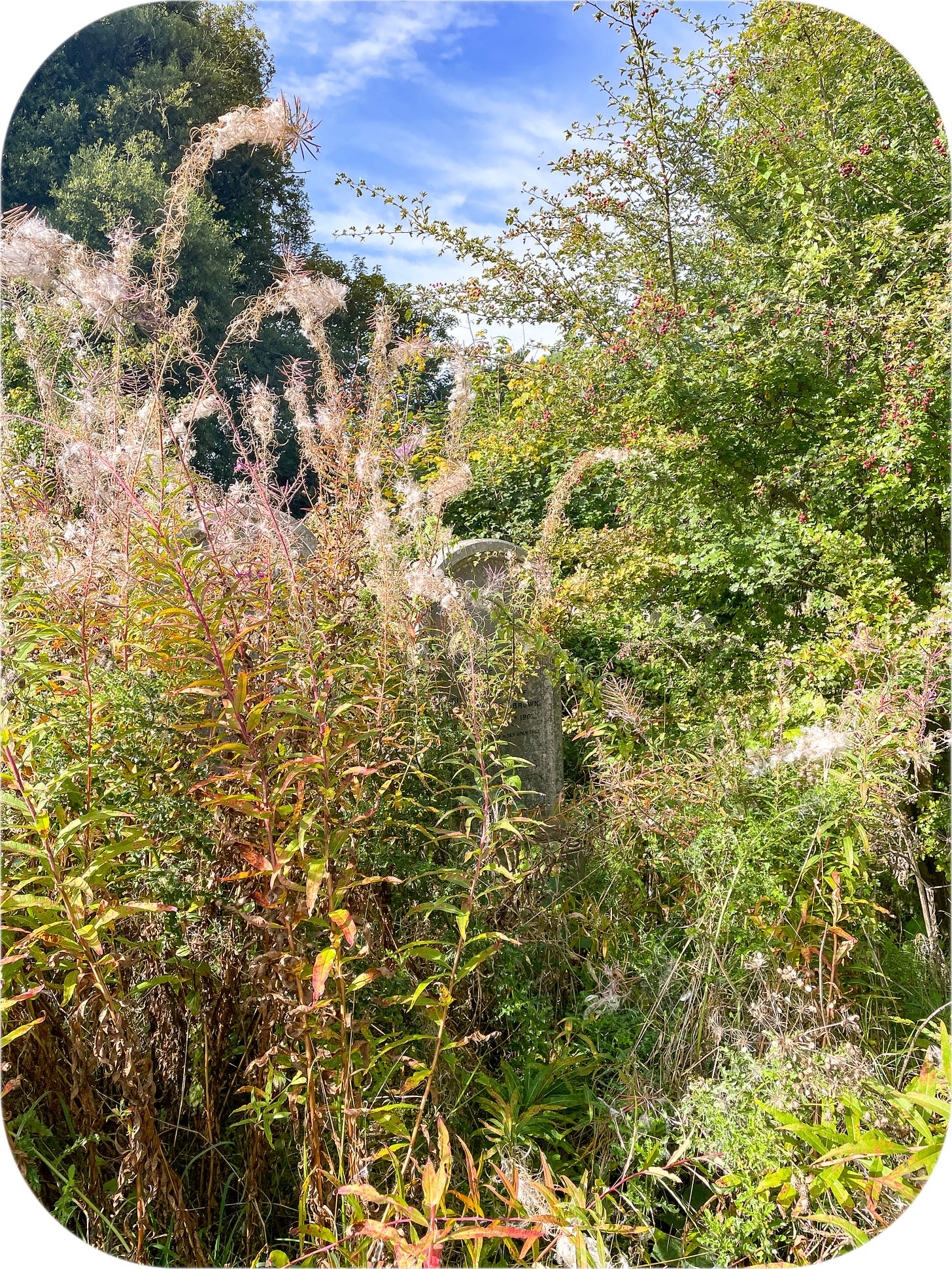
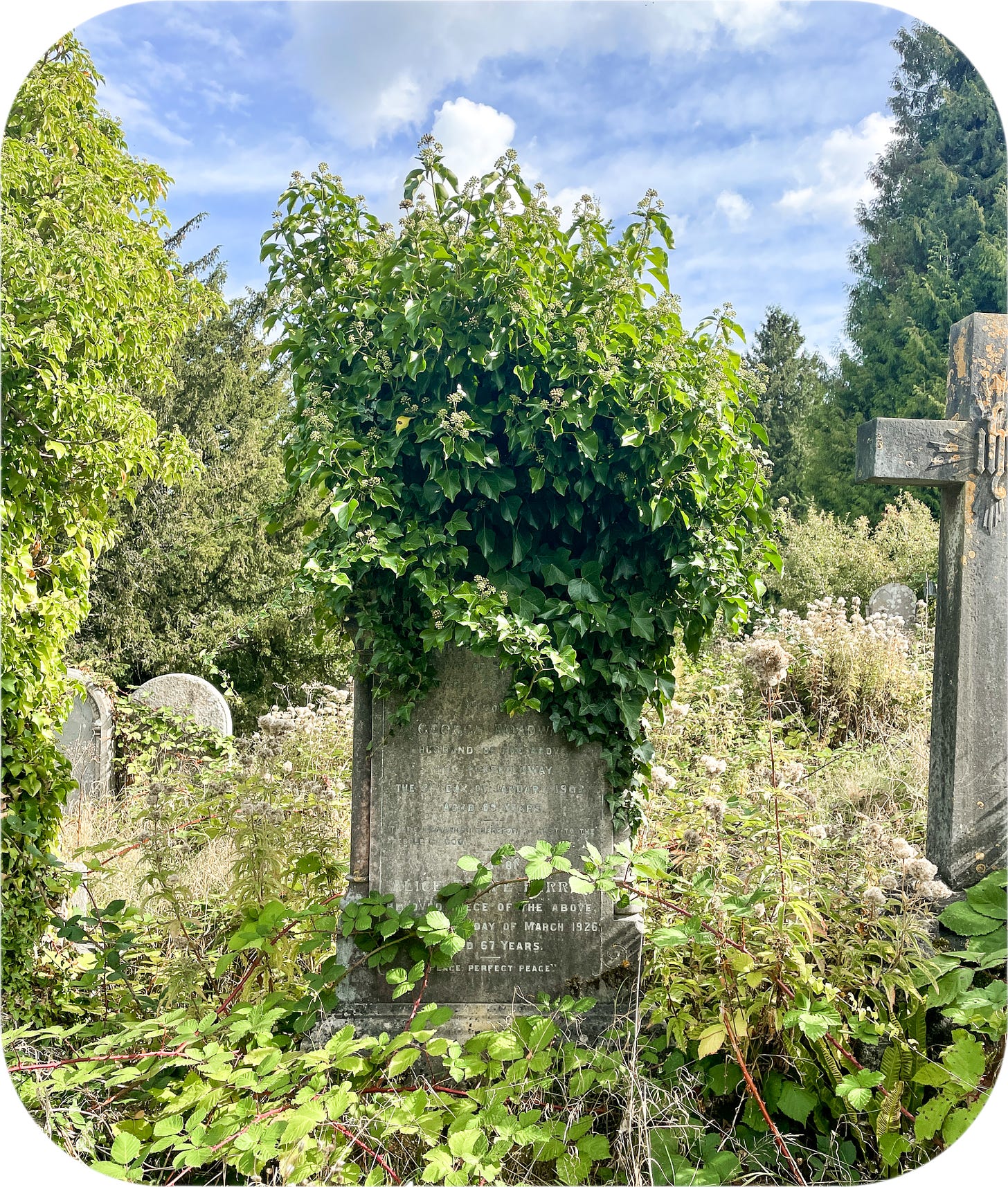

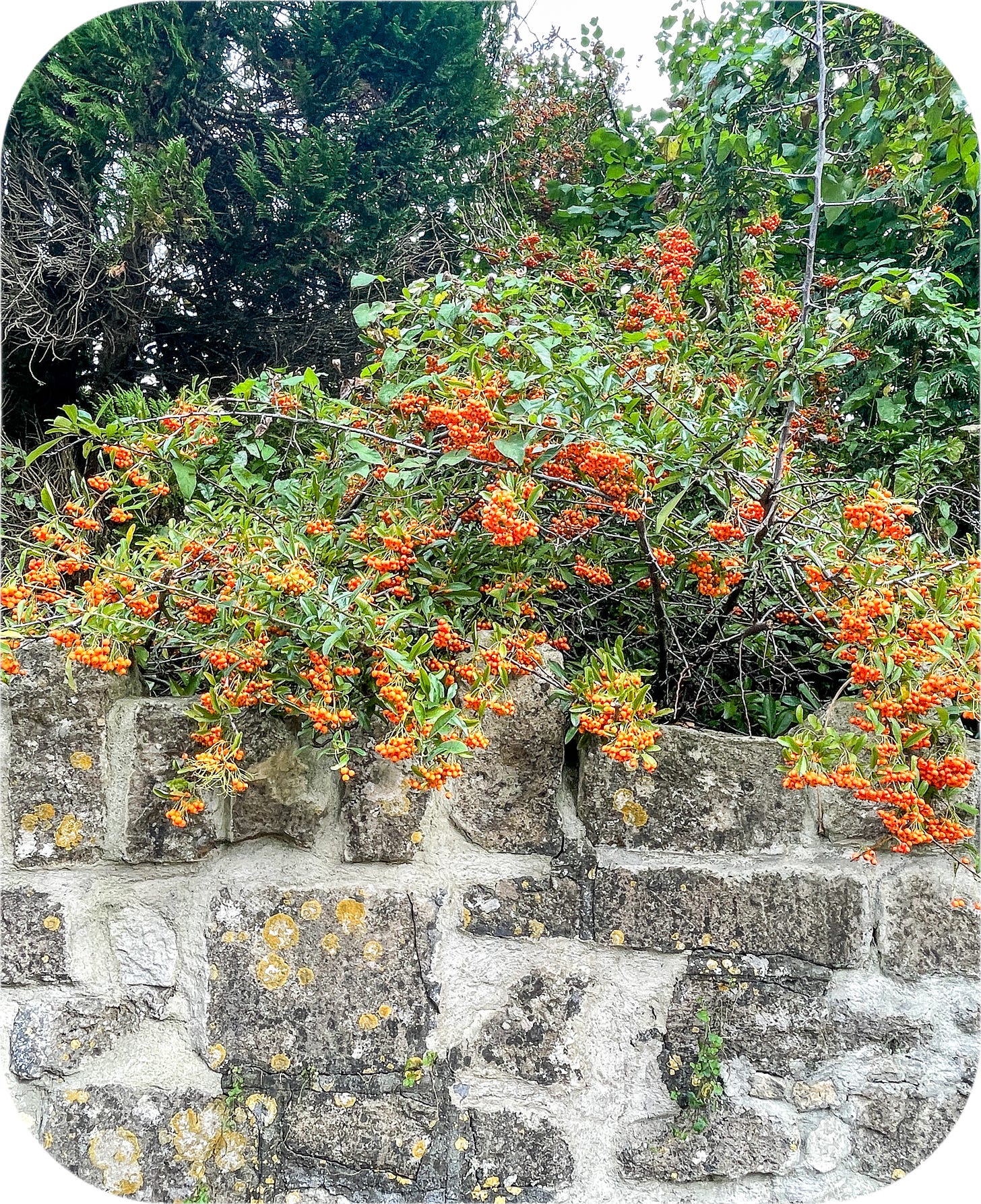

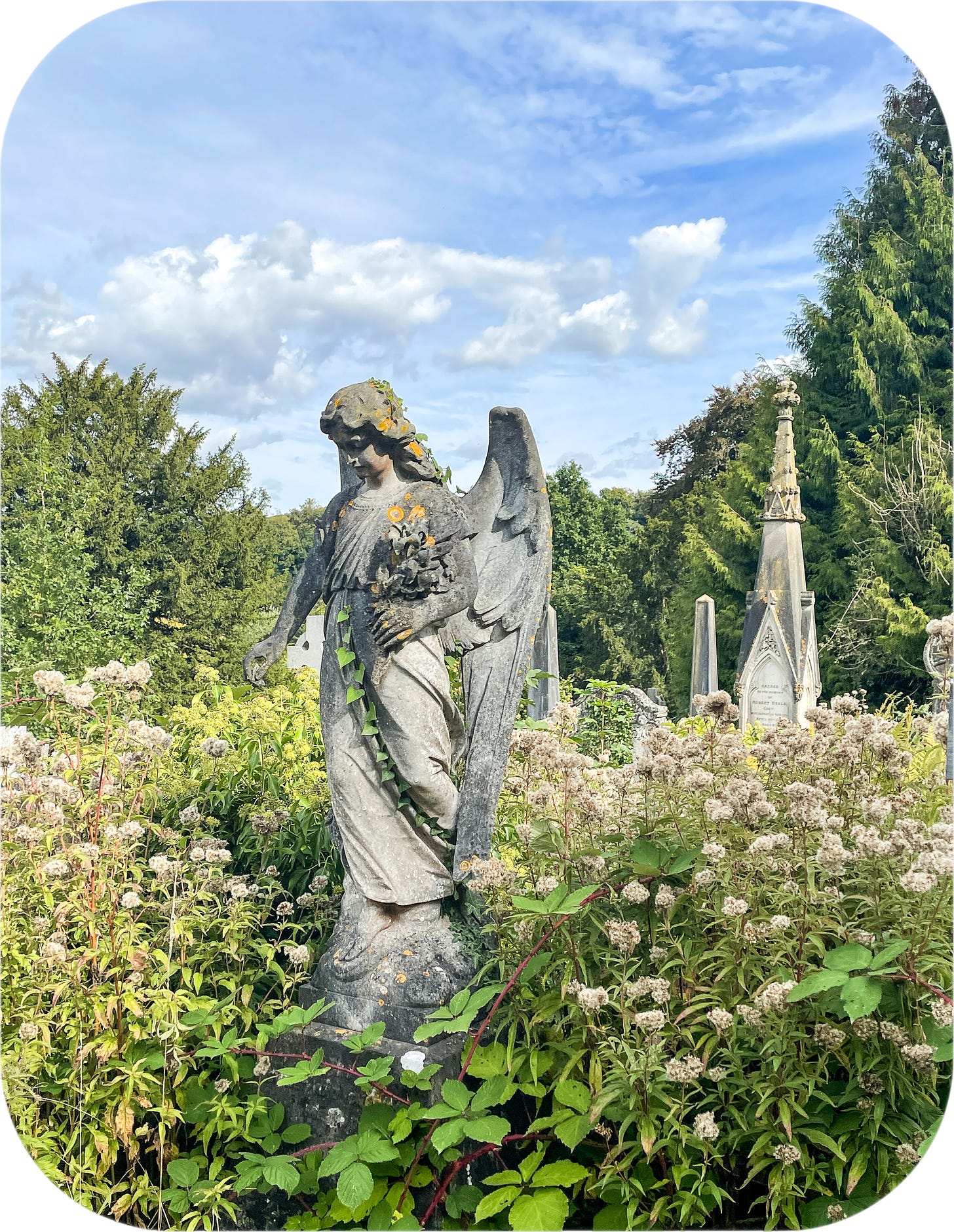
Your writing is beautiful, your photographs are stunning. For me, reading your newsletter is like sitting at a Viennese cafe and eating the most delicious of cakes.
So interesting to learn about these “off-the-beaten-path” places that I would never have known about otherwise - thanks for showing me some of the fascinating areas the world has to offer!